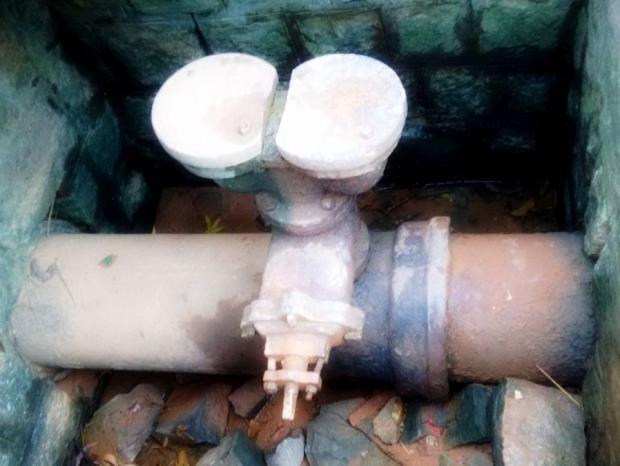
Photo: H. S. Sudhira / Research Matters
The inconsistency between spatial development of Bengaluru and its urban planning has skyrocketed the cost of city development, says a new study by Ms. N S Nalini, a researcher from the National Institute of Advanced Studies (NIAS), Bengaluru. Considering the example of the water supply system in the city, the study confirms that it is inefficient with an overpriced production and supply of water. The study also suggests that planning water supply based on the natural terrain of the city could minimize these costs.
“Think of Bengaluru city as a living organism with its own metabolism – supply, consumption and waste. Let’s call it the urban metabolism. Factors like industrialization has forced the metabolism to adapt to a certain way and the city (metabolism) has adapted and expanded in response to it. The new developments are not necessarily uniform and hence has steered the growth of the city in certain directions. The city plans envision it to grow in concentric circles, but in reality, the growth was and is, not in concentric circles, and neither it is in harmony with the natural terrain. The outcome is the increased cost of development. In the case of water supply, the cost of production and supply has become humongous, making it inefficient,” elaborates Ms. Nalini on the reason for the inefficiency.
Bengaluru has witnessed three phases of industrialization in the past. The first was in 1940s and 1950s when public sector units were established. The second was during 1960s and 1970s when industrial development boards came into existence and many garment industries were established. The third was in 1980s and 1990s when Information Technology parks were established. With each phase of industrialization, new settlements developed – each different from the earlier in the economic, social and political sense. Towards the end of the IT sector development, the city extended considerably towards the eastern and south eastern directions.
“While the city was growing extensively towards east and south east, the city planners envisioned growth towards north with the development of the International Airport, to ‘balance’ it”, adds Ms. Nalini. “We wanted to understand the impact of such urban development processes on the natural resource production and supply. We took an example of water supply for this purpose”, explains Ms. Nalini about the motivation behind the study.
After the source of the Arkavathy river dried up, the Bangalore Water Supply and Sewage Board (BWSSB) turned to the Cauvery river in the south and planned to supply water in phases to 28 subdivisions of BWSSB. The researchers used data from satellite images to understand the built-up area of the city and its growth. BWSSB’s sub-divisional map was overlaid on the built-up area map and the energy consumption in each sub-division was mapped for analysis.
Since the Cauvery water enters the city from the south, the researchers expected that the southern divisions to consume the least energy, followed by central divisions and the northern and eastern divisions. In reality, the researchers observed that the central, north-eastern, and southern subdivisions consumed lesser energy compared to the peripheral subdivisions supplied by the Cauvery stage 4 pumps that are more powerful than the earlier stage pumps supplying to the north, south, east and central divisions.
“This is because the pipeline routing distance of all the peripheral subdivisions is longer than the other subdivisions”, explains Ms. Nalini. “We observed that the routing distance played a major role in increased energy consumption. Though the central and north-eastern subdivisions are far away from the source, the efficiency of the pipeline routing has reduced the energy consumption unlike in the south-western and southern subdivisions where routing is 35-40% more than the direct distance. Elevation, on the other hand, has not really played a significant role in increasing the energy consumption. In fact, it has perhaps minimized the energy consumption by pumping it to the higher level and then supplying through gravity”, elaborates Ms. Nalini.
The routing distance was found to be more in some cases because of the natural terrain. “This cost of divergence- a result of inconsistency between urban planning, city development and natural terrain - increases the pumping expenditure for BWSSB. If the routing was intelligently planned for the peripheral subdivisions, there would have been a possibility of minimizing the energy consumption. A way forward would be to rethink our urban planning approaches and develop plans in which human beings, natural and the built environment, and the physical flows are inherent,” sums up Ms. Nalini.

























